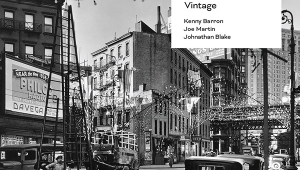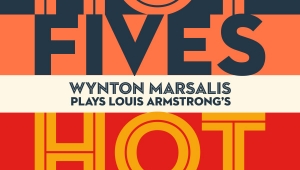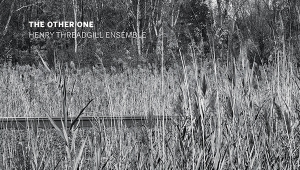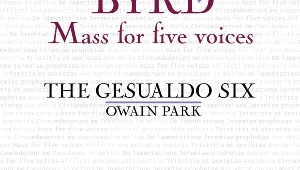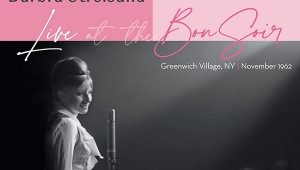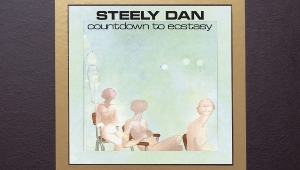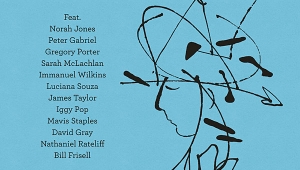| Columns Retired Columns & Blogs |
Recording of June 1998: Elgar: Enigma Variations
EDWARD ELGAR: Enigma Variations, In the South, Coronation March
George Hurst, Bournemouth Symphony Orchestra
Naxos 8.553564 (CD). 1997. Paul Myers, prod.; Dave Harries, eng. DDD. TT: 58:47
Performance ****
Sonics ****
George Hurst, Bournemouth Symphony Orchestra
Naxos 8.553564 (CD). 1997. Paul Myers, prod.; Dave Harries, eng. DDD. TT: 58:47
Performance ****
Sonics ****
In a letter to his parents in 1930, a 17-year-old Benjamin Britten described his attendance at a London concert. The first half of the program consisted of works by Humperdinck, Mozart, and Mahler; but since the second half was to be "all Elgar," Britten and his friend left at intermission. This little anecdote vividly illustrates the clear division that had grown between the establishment British composers of the turn of the century and a rapidly emerging new breed of musical thinkers. To the young post-World War I generation of developing composers, the likes of Ralph Vaughan Williams, Charles Stanford, Hubert Parry, and Elgar (1857-1934) belonged to an outdated, distastefully imperialistic empire, its music and mores marked by a rigid, exclusionary formality.
 Even Elgar recognized the prodigious change in his country's musical climate when, in 1932, he reluctantly began work on a never-to-be-completed third symphony. He had known for years that the world that had shaped his most fluid and worthy ideas was gone. In fact, following his wife's death in 1920, Elgar offered the world no more major works. However, when viewed in their proper context, Elgar's accomplishments are rather remarkable, and the works on this recording give us a fair taste of his orchestral range.
Even Elgar recognized the prodigious change in his country's musical climate when, in 1932, he reluctantly began work on a never-to-be-completed third symphony. He had known for years that the world that had shaped his most fluid and worthy ideas was gone. In fact, following his wife's death in 1920, Elgar offered the world no more major works. However, when viewed in their proper context, Elgar's accomplishments are rather remarkable, and the works on this recording give us a fair taste of his orchestral range.
Born to a shopkeeper, Elgar had great difficulty rising through the ranks of a strictly class-conscious society. Major success came relatively late—in Elgar's early 40s—although in his younger days he had had occasional "hits," such as the popular violin piece Salut d'amour. Indeed, it was only in 1899, when he produced the startlingly ambitious and engaging Variations on an Original Theme—now known as the Enigma Variations—that his place in the history of English music was assured. These 14 variations originally were conceived as playful yet serious musical "pictures" of several friends, including the composer's wife, his publisher, an amateur cellist, Elgar himself, and even a dog belonging to the organist at Hereford Cathedral.
"Enigma" refers not to these barely-disguised personalities, but to a so-called hidden theme—"one that everyone would know"—claimed by the composer to accompany in counterpoint the work's original theme. Elgar additionally referred to a larger theme that supposedly "goes with" the entire set, "but is not played." Although many suggestions have been offered—including "Auld Lang Syne," "Rule, Britannia," and "God Save the King"—no one has convincingly figured out the identity of the hidden second theme. As for the larger, overall theme, it could be the syllables of Edward Elgar's name, which perfectly matches rhythmically the melody's four-note beginning.
Leaving aside these enticing mysteries, the Enigma music itself represents a significant stage in both Elgar's development and in the course of English music. It was this work—hailed by Rimsky-Korsakov as "the best (set of orchestral variations) since Brahms"—that elevated the 42-year-old Elgar to the upper echelon of English composers. Enigma and the violin and cello concertos, are so rich in melody and sumptuously scored orchestral effects, and so skillfully wrought in their emotional impact, that audiences and performers can't help but love to hear and play them.
These are points well understood by the excellent Bournemouth Symphony and its very able conductor, George Hurst. Inexplicably underrated, especially for its exemplary interpretations of British music, the Bournemouth ensemble offers lucid, vibrant performances, with well-drawn phrasing and effectively graded dynamics, delivered without excess. True to the composer's intentions, this performance is blessedly free of heaviness in texture and the harmonic development is imaginative and well conceived. "Nimrod," the beautiful adagio variation that forms the heart and soul of the work, is played here with the kind of tempo and attention to detail that makes it easy to see why it is often thought of as one of the most beloved passages in all of romantic orchestral music.
Sonically, the engineering is lively and dynamic, allowing us to hear the detail among the inner parts, while also providing a reasonably deep soundstage and a satisfying sense of the orchestra's presence—especially the fullness of its fortissimos.
Hurst's reading of In the South is equally impressive. Less bold, more genteel, but with the same facility for integrating structural and thematic components, this version of Elgar's overture is a fully developed, sturdy, and often exciting performance. Whether Elgar consciously composed In The South thinking Straussian thoughts doesn't really matter. By this time (1904) Elgar had convincingly proved his facility for learning from other composers. And he learned from lots of them—including Wagner, Schumann, Brahms, Delibes, Saint-Saëns, and Mendelssohn.
Elgar's Coronation March, written for the coronation of King George V in 1911, is, at nine minutes, a substantial and impressive orchestral tribute, exuding a characteristically proud, heroic eloquence While there are other notable recordings of these works including Dutuoit/Montreal (London 430241-2) and Andrew Davis/Philharmonia Orchestra (CBS MDK 44788) for the Enigma Variations and Slatkin/London PO (RCA 60380-2RC) and Andrew Davis/BBC So (Teldec 9031-74888-2) for In The South—none can beat this pairing for its exceptional values—with no musical or sonic compromises..—David Vernier
- Log in or register to post comments


